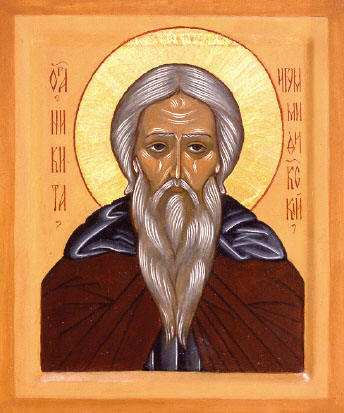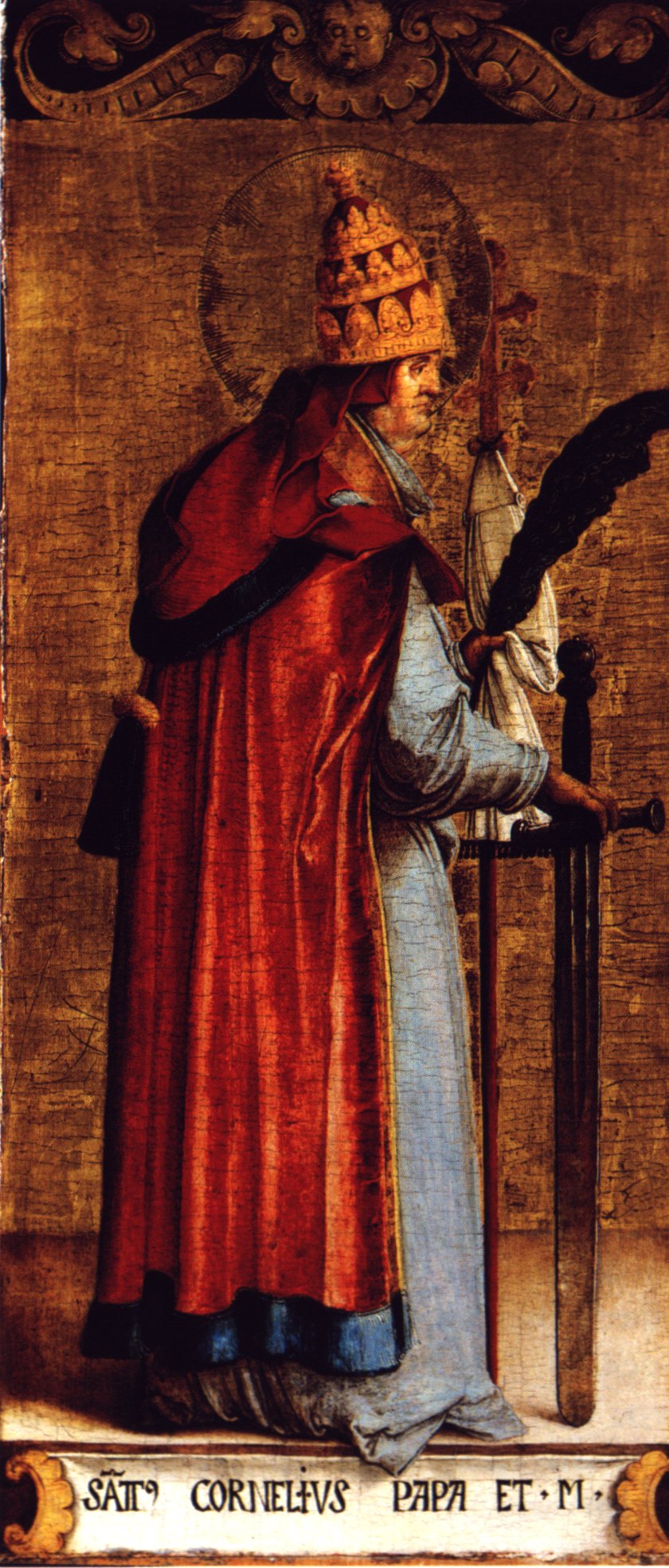|
September 16 (Eastern Orthodox Liturgics)
Sep. 15 - Eastern Orthodox liturgical calendar - Sep. 17 All fixed commemorations below celebrated on ''September 29'' by Orthodox Churches on the Old Calendar. For September 16th, Orthodox Churches on the Old Calendar commemorate the Saints listed on '' September 3''. Saints * Saint Sebastiana, disciple of Apostle Paul, martyred at Heraclea (86)September 16/September 29 Orthodox Calendar (PRAVOSLAVIE.RU).September 29 / September 16 HOLY TRINITY RUSSIAN ORTHODOX CHURCH (A parish of the Patriarchate of Moscow). Русс� ... [...More Info...] [...Related Items...] OR: [Wikipedia] [Google] [Baidu] |
Chalcedon
Chalcedon ( or ; , sometimes transliterated as ''Chalkedon'') was an ancient maritime town of Bithynia, in Asia Minor. It was located almost directly opposite Byzantium, south of Scutari (modern Üsküdar) and it is now a district of the city of Istanbul named Kadıköy. The name ''Chalcedon'' is a variant of Calchedon, found on all the coins of the town as well as in manuscripts of Herodotus's '' Histories'', Xenophon's '' Hellenica'', Arrian's ''Anabasis'', and other works. Except for the Maiden's Tower, almost no above-ground vestiges of the ancient city survive in Kadıköy today; artifacts uncovered at Altıyol and other excavation sites are on display at the Istanbul Archaeological Museum. The site of Chalcedon is located on a small peninsula on the north coast of the Sea of Marmara, near the mouth of the Bosphorus. A stream, called the Chalcis or Chalcedon in antiquity William Smith, LLD, ed. (1854). '' Dictionary of Greek and Roman Geography''"Chalcedon" and now kno ... [...More Info...] [...Related Items...] OR: [Wikipedia] [Google] [Baidu] |
Whithorn
Whithorn ( �ʍɪthorn 'HWIT-horn'; ''Taigh Mhàrtainn'' in Gaelic), is a royal burgh in the historic county of Wigtownshire in Dumfries and Galloway, Scotland, about south of Wigtown. The town was the location of the first recorded Christian church in Scotland, ''Candida Casa'' : the 'White r 'Shining'House', built by Saint Ninian about 397. Toponymy There is a tradition that St Ninian built a church of stone and lime nearby in the late 4th century; it was called , the White House. "Whithorn" is a modern form of the Anglo-Saxon version of this name, ''Hwit Ærn'', "white house". In Gallovidian Gaelic, it was called ''Rosnat'', or ''Futarna'', the latter a version of the Anglo-Saxon name (Gaelic has no sound corresponding to English ''wh''). Ninian dedicated the church to his master Martin of Tours, and when he died (probably in 432) Ninian was buried in the church. Early history A monastery and diocese of the Anglo-Saxon kingdom of Northumbria was founded on the site in th ... [...More Info...] [...Related Items...] OR: [Wikipedia] [Google] [Baidu] |
Saint Ninian
Ninian is a Christian saint, first mentioned in the 8th century as being an early missionary among the Pictish peoples of what is now Scotland. For this reason he is known as the Apostle to the Southern Picts, and there are numerous dedications to him in those parts of Scotland with a Pictish heritage, throughout the Scottish Lowlands, and in parts of Northern England with a Northumbrian heritage. He is also known as Ringan in Scotland, and as Trynnian in Northern England. Ninian's major shrine was at Whithorn in Galloway, where he is associated with the Candida Casa (Latin for 'White House'). Nothing is known about his teachings, and there is no unchallenged authority for information about his life. The nature of Ninian's identity is uncertain, and historians have identified the name "Ninian" with other historical figures. A popular hypothesis proposed by Thomas Owen Clancy, a researcher and professor of Celtic studies, posits that Ninian can be identified with three other hi ... [...More Info...] [...Related Items...] OR: [Wikipedia] [Google] [Baidu] |
John And Marcianus
John and Marcianus, were Roman martyrs. Marcianus was a Roman Senator, whose son John died of unknown causes. Sts. Abundius and Abundantius, who were Christians condemned to execution, met Marcianus with his dead son on the way to their death. Abundius prayed over John, and he came back to life. At that moment, John and Marcianus both converted to Christianity. Patron Saint Index They too were along with Sts. Abundius and Abundantius, just north of , being beheaded ca. 304. The r ... [...More Info...] [...Related Items...] OR: [Wikipedia] [Google] [Baidu] |
Abundius And Abundantius
Abundius and Abundantius (died c. 304) are Christian martyrs who were killed during the Diocletian persecution. Their feast day is celebrated on September 16. Biography Abundius was a priest who had earlier resurrected John, the son of Marcianus. Upon hearing of this, the emperor ordered these three, with Abundantius, a deacon, to be beheaded. The executions were carried out at the 26th milestone of the Via Flaminia. Veneration Their bodies were later transferred to the church of Cosmas and Damian in Rome. The bodies of Marcianus and John were found around 1001 and transferred to Civita Castellana. There, they were elected to be the city's principal patron saints. In 1583, the relics of Abundius and Abundantius were transferred to the SS. Nome di Gesu, where they were placed under the church's high altar. Aloysius Gonzaga heard mass there before becoming a Jesuit , image = Ihs-logo.svg , image_size = 175px , caption = Christ ... [...More Info...] [...Related Items...] OR: [Wikipedia] [Google] [Baidu] |
Lucy And Geminian
Saints Lucy and Geminian were venerated on 16 September as saints who died as martyrs in Rome during the persecution of Diocletian in about 290 or 300 or, more precisely, in 304. Veneration for them was ancient but their story is "only known from fabulous acts."Agnes Baillie Cunninghame Dunbar, ''A Dictionary of Saintly Women'' (Bell, 1904), 469. Lucy appears to be in reality the same as the Lucy of Syracuse whose feast is on 13 December, but the Geminian who was venerated on 16 September seems to be a fictitious character, not to be confused with Saint Geminianus, Bishop of Modena.Calendarium Romanum (Libreria Editrice Vaticana 1969), p. 139 Legend According to the legend, Lucy was a 75-year-old widow and Geminian a young catechist. Lucy was accused by her son, Eutropius (or Euprepius), of being a Christian. She was brought before Diocletian, who at first attempted to dissuade her and then placed her in a cauldron of burning pitch; Lucy lived for three days in the cauldron. W ... [...More Info...] [...Related Items...] OR: [Wikipedia] [Google] [Baidu] |
August 31 (Eastern Orthodox Liturgics)
August 30 - Eastern Orthodox liturgical calendar - September 1 All fixed commemorations below celebrated on ''September 13'' by Eastern Orthodox Churches on the Old Calendar. For August 31st, Orthodox Churches on the Old Calendar commemorate the Saints listed on ''August 18''. Saints * Holy 7 Virgin-martyrs, at Gaza, by the sword.The Autonomous Orthodox Metropolia of Western Europe and the Americas (ROCOR). ''St. Hilarion Calendar of Saints for the year of our Lord 2004.'' St. Hilarion Press (Austin, TX). p.64. * Holy 4 Martyrs, at Perge in Pamphylia, by fire. * Holy 366 Martyrs, at Nicomedia, by the sword. * Martyr Phileortus, by the sword. * Martyrs Menas, Faustus, Andrew and Heraclius. ''(see also: July 12)'' * Saint Diadochos. * Saint Gennadius, Patriarch of Constantinople (471)September 13/August 31 Orthodox Calendar (PR ... [...More Info...] [...Related Items...] OR: [Wikipedia] [Google] [Baidu] |
Bishop Of Carthage
The Archdiocese of Carthage, also known as the Church of Carthage, was a Latin Catholic diocese established in Carthage, Roman Empire, in the 2nd century. Agrippin was the first named bishop, around 230 AD. The temporal importance of the city of Carthage in the Roman Empire had previously been restored by Julius Caesar and Augustus. When Christianity became firmly established around the Roman province of Africa Proconsulare, Carthage became its natural ecclesiastical seat. Carthage subsequently exercised informal primacy as an archdiocese, being the most important center of Christianity in the whole of Roman Africa, corresponding to most of today's Mediterranean coast and inland of Northern Africa. As such, it enjoyed honorary title of patriarch as well as primate of Africa: Pope Leo I confirmed the primacy of the bishop of Carthage in 446: "Indeed, after the Roman Bishop, the leading Bishop and metropolitan for all Africa is the Bishop of Carthage."François Decret, ''Early Ch ... [...More Info...] [...Related Items...] OR: [Wikipedia] [Google] [Baidu] |
Cyprian
Cyprian (; la, Thaschus Caecilius Cyprianus; 210 – 14 September 258 AD''The Liturgy of the Hours according to the Roman Rite: Vol. IV.'' New York: Catholic Book Publishing Company, 1975. p. 1406.) was a bishop of Carthage and an early Christian writer of Berber descent, many of whose Latin works are extant. He is recognized as a saint in the Western and Eastern churches. He was born around the beginning of the 3rd century in North Africa, perhaps at Carthage, where he received a classical education. Soon after converting to Christianity, he became a bishop in 249. A controversial figure during his lifetime, his strong pastoral skills, firm conduct during the Novatianist heresy and outbreak of the Plague of Cyprian (named after him due to his description of it), and eventual martyrdom at Carthage established his reputation and proved his sanctity in the eyes of the Church. His skillful Latin rhetoric led to his being considered the pre-eminent Latin writer of Western Chr ... [...More Info...] [...Related Items...] OR: [Wikipedia] [Google] [Baidu] |
Pope Cornelius
Pope Cornelius was the bishop of Rome from 6th or 13th March 251 until his martyrdom in June 253. He was pope during and following a period of persecution of the church, while a schism occurred over how Lapsi (Christianity), repentant church members who had practiced pagan sacrifices to protect themselves could be readmitted to the church. He agreed with Cyprian of Carthage that those who had lapsed could be restored to communion after varying forms of Initiation, Reinitiation and Penance. This position was in contrast to the Novatianism, Novatianists, who held that those who failed to maintain their confession of faith under persecution would not be received again into communion with the church. This resulted in a short-lived schism in the Church of Rome that spread as each side sought to gather support. Cornelius held a synod that confirmed his election and excommunicated Novatian, but the controversy regarding lapsed members continued for years. The persecutions resumed in 251 u ... [...More Info...] [...Related Items...] OR: [Wikipedia] [Google] [Baidu] |
Czechs
The Czechs ( cs, Češi, ; singular Czech, masculine: ''Čech'' , singular feminine: ''Češka'' ), or the Czech people (), are a West Slavic ethnic group and a nation native to the Czech Republic in Central Europe, who share a common ancestry, culture, history, and the Czech language. Ethnic Czechs were called Bohemians in English until the early 20th century, referring to the former name of their country, Bohemia, which in turn was adapted from the late Iron Age tribe of Celtic Boii. During the Migration Period, West Slavic tribes settled in the area, "assimilated the remaining Celtic and Germanic populations", and formed a principality in the 9th century, which was initially part of Great Moravia, in form of Duchy of Bohemia and later Kingdom of Bohemia, the predecessors of the modern republic. The Czech diaspora is found in notable numbers in the United States, Canada, Israel, Austria, Germany, Slovakia, Ukraine, Switzerland, Italy, the United Kingdom, Australia, France, Russ ... [...More Info...] [...Related Items...] OR: [Wikipedia] [Google] [Baidu] |





